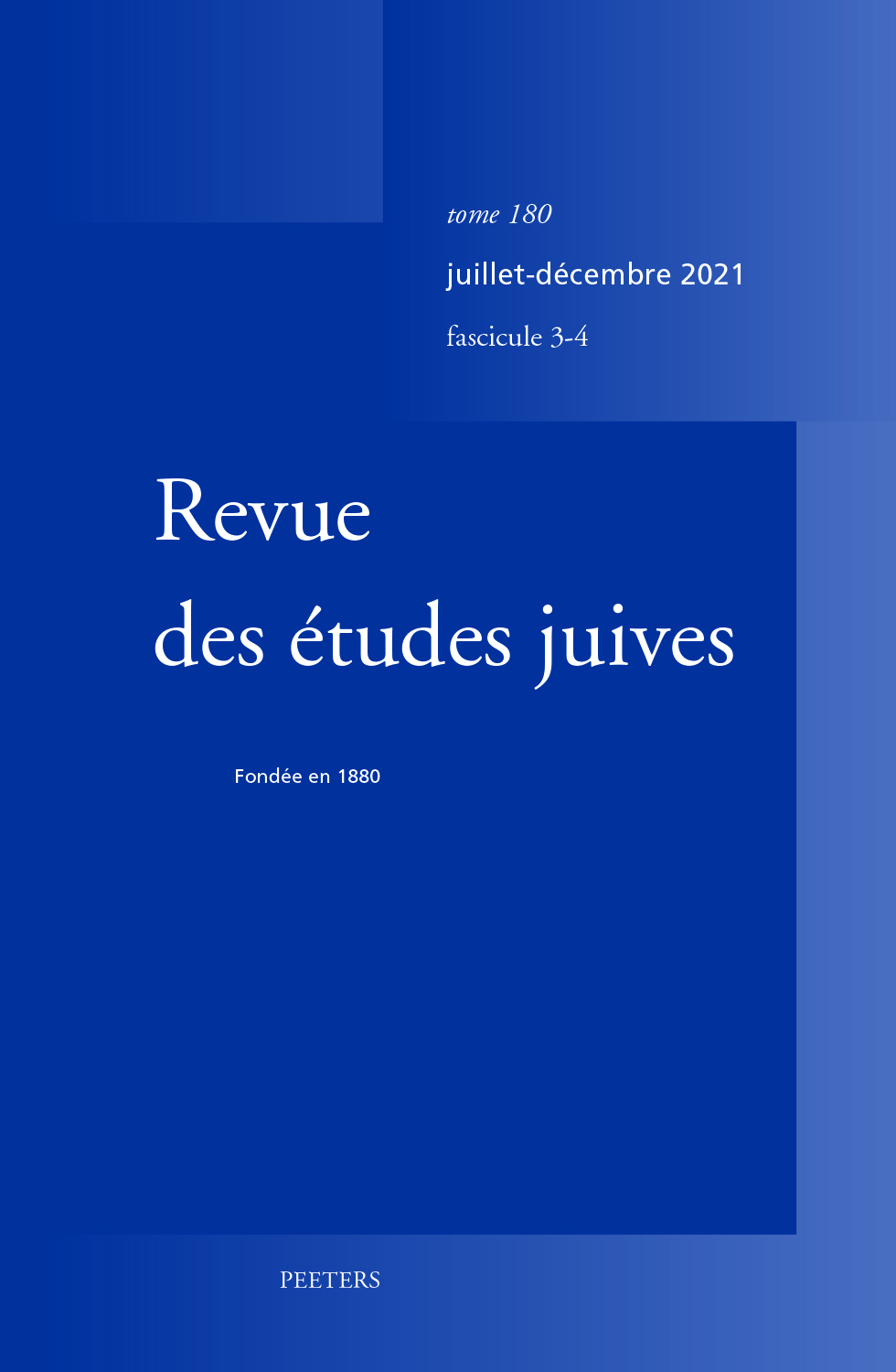 previous article in this issue previous article in this issue | next article in this issue  |

Preview first page |
Document Details : Title: Sébastien Munster, de l'hebraica veritas à l'«ethnographie» du judaïsme rabbinique (II) Subtitle: Munster et les Juifs; postérité Author(s): ROTHSCHILD, Jean-Pierre Journal: Revue des Études Juives Volume: 182 Issue: 3-4 Date: 2023 Pages: 361-398 DOI: 10.2143/REJ.182.3.3292500 Abstract : Après avoir passé en revue (1e partie, REJ 182/1-2, 2023, p. 95-139) les diverses justifications par Munster de son activité d’hébraïsant et le statut nouveau qu’il contribue à définir, nous distinguons à présent plusieurs modalités de ses positions regardant les juifs avant d’examiner le cas d’un de ses lecteurs savants, Gilbert Génébrard (1535-1597), exemple à la fois de l’influence de Munster et de l’écart entre les justifications d’un hébraïsant réformé allemand de la première moitié du XVIe siècle et celles d’un hébraïsant catholique français de la seconde moitié du même siècle. En conclusion, nous proposons la distinction de deux modèles de philologie inspirés par les démarches qu’illustrent ces deux auteurs, l’une procédant par distanciation objective après neutralisation du sens, l’autre opérant en sympathie et adhésion avec les valeurs qui sous-tendent les textes étudiés. Having reviewed (in the 1st part of this article, REJ 182/1-2, 2023, p. 95-139) the different ways in which Münster justifies his activity as a Hebrew scholar and his new social status as an expert, we discuss now his various positions regarding Jews and Judaism; then we compare him with one of his disciples (though a staunch Catholic), Gilbert Génébrard (1535-1597), in order to measure both Münster’s influence on him and the difference between the stance of a German Protestant Hebraist in the first half of the 16th century and that of a French Catholic one in the second half of that century. To conclude, we propose a distinction between two patterns of the philological work, each exemplified by one of these two scholars: according to the first, the scholar distances himself from his textual object and neutralize its significance in terms of values; while following the other, he shares and stands for the values that are borne by the texts he studies. |
|


